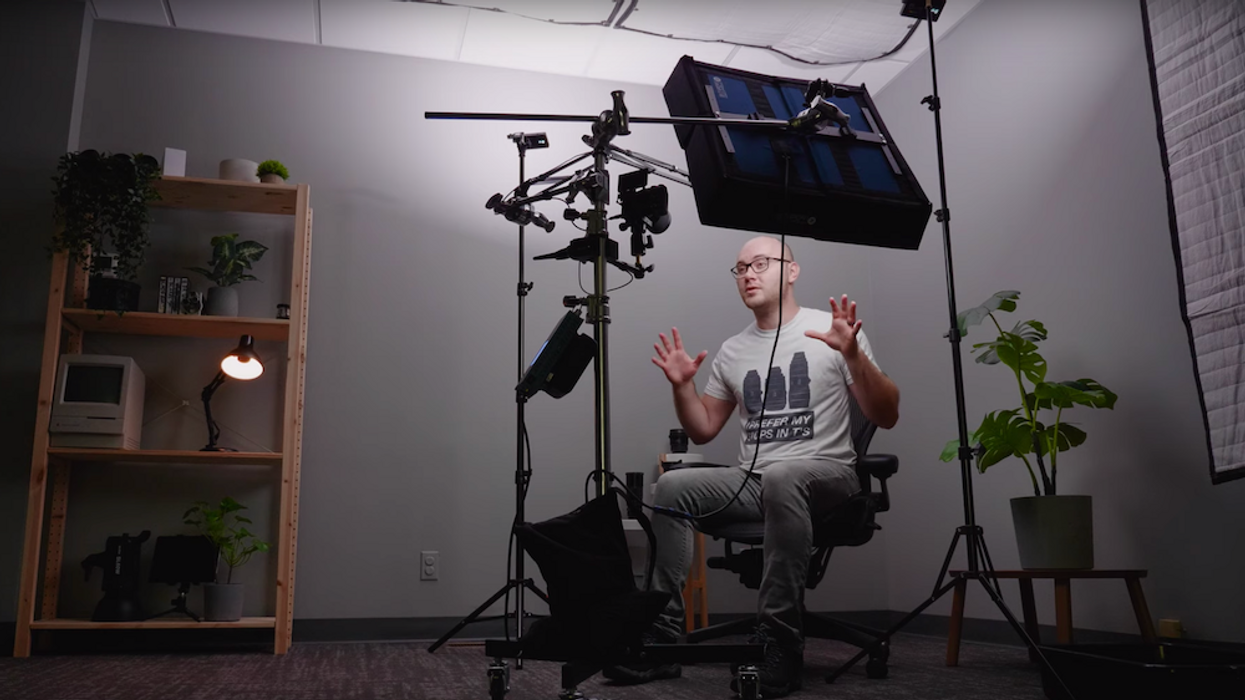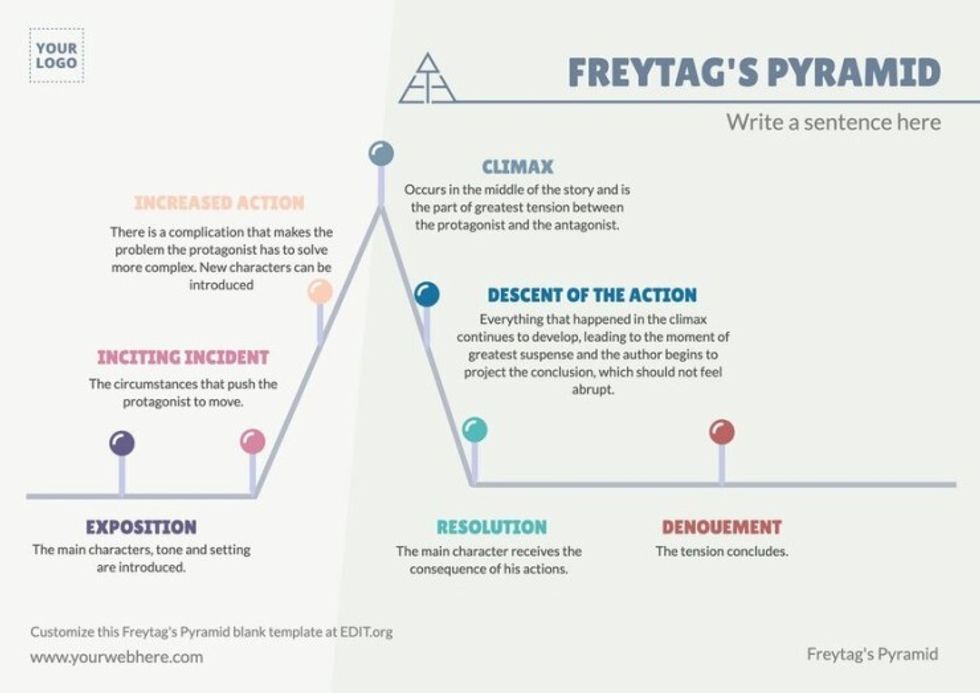How Influencers Structure Long-Form YouTube Content
Are you trying to get some views on your YouTube channel?

How much time do you spend watching Youtube every week? For me, it seems like the number continues to escalate. That could be because the stories on these channels are getting better and better. I have a theory. I think it's because they're getting into screenplay structure.
Truth is, I've been scanning a lot of these longer-form YouTuber videos where influencers do things out in the wild. I'm talking go on a ton of dates, get into prank wars, or try out vacation spots. In all of them, I've found a five-act structure we see in a lot of screenplays, especially for TV shows.
I figure some people who read this site might want to make these YouTube videos. Influencers, or KOPs as the rest of the world calls them, can make a lot of money by getting millions of people to watch their channels. They do that by keeping us watching their videos through commercials to see what happens on the other side.
Structure helps do that.
Today we're going to break down long-form YouTube structure and show you how you can apply it to your work.
Sound good? Let's go.

How Influencers Structure Long-Form YouTube Content
I think the best way to break this all down is to use one of those videos YouTubers are making. I settled on one from Airrack, who has 10.6M subscribers and looks like he sells a lot of ad space. The video in question is called "We Break 100 Laws in 24 Hours."
It follows this influencer's journey as he breaks so-called "dumb laws" he found on the books. It has a pretty perfect five-act structure.
Check the video out, and then let's get educated together.
What Is Five-Act Structure?
Before we go into the wild beats of this video, I think we have to tackle the elephant in the room. And I don't mean my internal fear that influencers and the YouTube generation are destroying attention spans, thus altering film and TV in unrepairable ways and changing the very art form I fell in love with so long ago.
I mean learning five-act structure.
Story structure marks the beats or moments in a play, TV show, or movie that move along the plot. The structure itself comes from Aristotle's Poetics. In 350 BCE, Aristotle wrote that the plot structure of a drama is formed like a basic triangle.
Our traditional three acts come from this triangle. But people wanted more nuance as plots got more complicated. While traditionally marked in three acts, a German playwright and novelist named Gustav Freytag wrote a book called Die Technik des Dramas. In it, he put forth the five-act dramatic structure.
Today, it's referred to as "Freytag's pyramid," and you can actually use it as an outline for your YouTube videos.
Check out the acts here, and then we'll apply them to the video.
- The Tag: Start exciting
- Act One: Exposition for the audience
- Act Two: Conflicts appear
- Act Three: Things get really bad
- Act Four: Everything's downhill
- Act Five: Tying up loose ends
- The Dénouement: Where do we go from here?

Applying Freytag's Pyramid to YouTube Videos
As I posited earlier, I wanted to take Airrack's video and put it through this structural ringer. The reason I chose that video is that I felt like it was indicative of many others I have seen online. In fact, that same thesis was used by at least five other YouTubers.
In Airrack's line of videos, whether he's going on 100 dates or trying out the biggest house, I see a sort of character arc emerge in each video, with a clean wrap-up at the end. Knowing that, I worked backward and filled in these story beats.
- The Tag: Start exciting. In the video, we jump in right away with audience chatting and the thesis of the video. Some laws are dumb, and this team will break them.
- Act One: Exposition for the audience. We're given who will be in the video, how they compiled the laws, and how long it should take them, all in under one minute!
- Act Two: Conflicts appear. There are 100 laws to break, and as the guys keep working, they run into people unwilling to help. Get chased off from libraries, and have to drive all over to break more and more laws. As this escalates, they risk real trouble.
- Act Three: Things get really bad. While at the beach, the guys have a run-in with the police for impersonating an officer, then have the real police looking for them after jumping off the pier.
- Act Four: Everything's downhill. They're running out of time and cannot break laws fast enough. The team also turns on Arrack's researcher, who has them breaking laws, but hasn't really broken any himself.
- Act Five: Tying up loose ends. They switch locations to the girlfriend's house, getting every person on the crew to break a set of laws and then setting off into the night to escalate what they're doing to reach their goals.
- The Dénouement: Where do we go from here? After they reach their time limit, we see them only get to 66 laws, but leave the epic one for last, climbing a billboard and looking back to reflect on a day filled with bonding.
Other YouTube Video Structure Techniques
It's not just about the way you structure the video, but also the way you bring people along with you. The story structure here sucks people in and then hooks them so they want to keep watching. But there are small things they do that help this effort.
If you watched that video, you also noticed that every beat and act came with a different location. They go there to keep the story fresh. You might get bored with antics on the road, but excited by the library. Once the beach is tapped out, you can go to an apartment. And then it's all over by night.
Every time locations are changed, we get a bit of a cliffhanger or a story escalation that makes you wonder where they could be headed. They also try to escalate the action. When we're ready to leave the beach, they jump off the pier and are pursued by cops. when they leave the girlfriend, they break a streetlight on the way out.
These location changes, compiled with cliffhangers, keep people watching deeper into the video, thus making YouTube's algorithm happy.
Summing Up How Influencers Structure Long-Form YouTube Content
There you have it, these beats are definitively how many YouTubers structure their videos now. It gives them the ability to shoot longer-form videos with ranging plots. And while the one we used didn't have the most obvious lesson at the end, you can see how easy it would be to sum things up with parting words.
So if you're branching out into stories like these, I would highly recommend writing at least an outline using five-act structure before trying this endeavor.
It can help you get your ideas on the page, retain views, and get you to that upper echelon of creators.
Let me know your thoughts in the comments.














